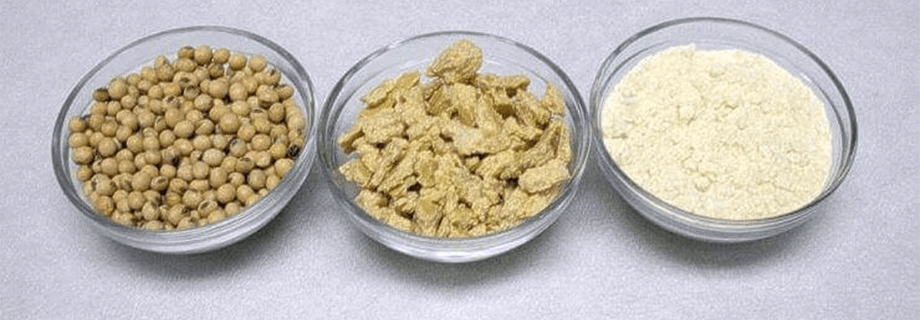Textured Soy Protein (TSP) Part II

As you read in part 1 of this blog, we discussed the current desire to eat healthier which has resulted in an increased demand for textured soy protein (TSP) as a protein replacement due to its affordability and ability to blend well. In part 2, we will discuss what items you need to produce TSP as well as current market trends. There are two very different approaches to produce TSP and Insta-Pro can help you with either option that makes sense for you. First, is to mechanically process your own soy ingredient utilizing the ExPress® system. The second is to purchase solvent extracted soybean meal or flour. I will walk you through both and their trade-offs.
Mechanically Processed ExPress Meal
In order to produce TSP, you must have the proper equipment and ingredients to ensure a quality end product. If you are using a mechanical process to make it, you will need a dehuller, in addition to the Insta-Pro High Shear Extruder, Insta-Pro press and cooler along with additional support equipment. The extruder and press are used to extract oil, then the product is cooled. At that point the soy is prepped for the Insta-Pro TSP extruder, cut, dried and cooled. The advantage of this approach is that soy still has 6-8% oil and it has been prepared by the high shear extruder giving it a superior taste and mouth feel. The challenge to this approach is it is a higher investment. If you currently have an ExPress® plant (Extruder + Press = Oil and Meal), you can more easily include additional equipment to process TSP at a lower capital investment.
Solvent Extracted Soybean Meal
If you want to keep capital investment low to start or to test the market, utilizing solvent extracted soybean meal is a good option. Developing TSP with a solvent system can be a lower investment, but the challenges are that it makes you dependent on a third party and impacts the quality of your end product. Although you are using the same Insta-Pro TSP extruder it is using solvent meal with less than 1% oil versus the 6-8% oil in ExPress soybean meal negatively impacting the flavor.
To make an educated and accurate decision for your business, you must also research information about TSP in your region. For example, in Argentina, when exporting TSP, the government has a revenue retention of 5% versus a 35% for soybeans. In Asia, companies purchase large quantities, focusing less on quality and more on higher protein levels. In Africa, there is a need for TSP, but the issue is that they only have the option to process it mechanically, which is a greater investment. The reason they can’t start from solvent extracted soybean is because they don’t dehull it in that region, making it difficult to texturize.
Whether you decide to process your TSP with solvent or ExPress® processed meal, considering costs, equipment, and industry trends are important. Insta-Pro International has many valuable resources available such as nutritionists on staff, service programs to ensure proper maintenance of equipment, and an R&D department dedicated to our customer’s needs. Currently, our R&D department is researching different types of TSP and processes to produce it. If you are interested in learning further about the TSP process, contact our Sales Director in your region.


